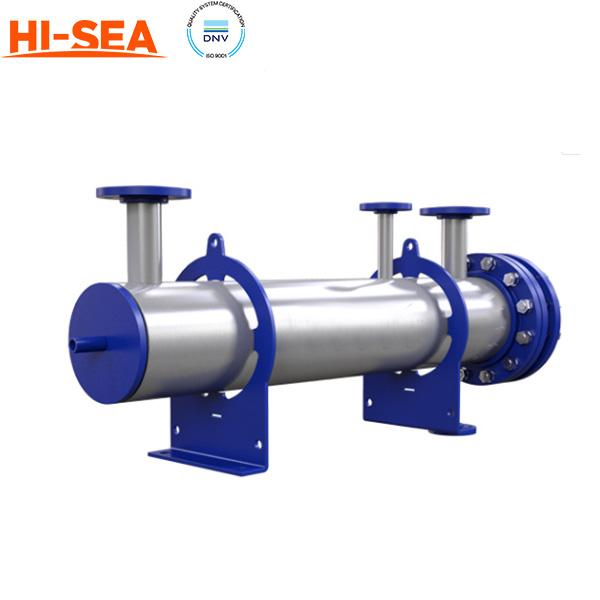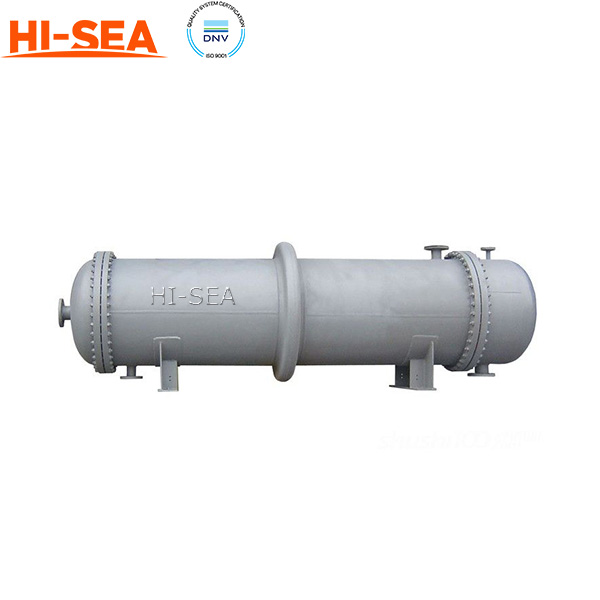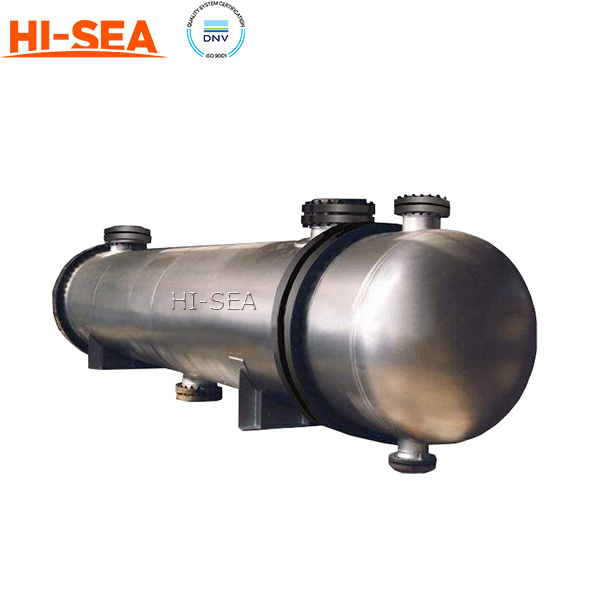MARINE & OFFSHORE EQUIPMENT
- Dredging Equipment
- Marine Deck Machinery
-
Marine Mooring Equipment
-
Marine Anchor
- AC-14 HHP Anchor
- Admiralty Anchor
- Beldt Stockless Anchor
- Bruce Anchor
- Spek Anchor
- Danforth HHP Anchor
- Delta High Holding Power Anchor
- GB11579-89 Light Weight Anchor
- Hall Anchor
- High Holding Power Mastrosov Anchor
- Hot Dip Galvanized Anchor
- Japan Stock Anchor
- JIS Stockless Anchor
- Pool Anchor
- Single Fluke Anchor
- Stainless Steel Anchor
- Stevpris MK5 Anchor
- Stingray Anchor
- US Navy Stockless Anchor
-
Marine Anchor Chain
-
Marine Shackle
- Kenter Shackle
- D Type Joining Shackle
- Pear Shaped Shackle
- Anchor Swivel Shackle Type A
- Anchor Swivel Shackle Type B
- Buoy Shackle Type A
- Buoy Shackle Type B
- C Type Detachable Connecting Link
- D Shackle
- Forelock Shackle
- Anchor Chain Swivel Group
- Straight Shackle
- Anchor Shackle
- Marine Triangle Plate
- Anchor Chain Swivel
- Anchor Chain Joining Shackle
- Anchor Chain End Shackle
- Slim Kenter Shackle
-
Chain Chaser
-
Marine Bollard
-
Marine Chock
-
Marine Fairlead
-
Marine Chain Stopper
-
Marine Mooring Reel
-
Marine Towing Bracket
-
Mooring Rope
-
Marine Towing Hook
-
Marine Shark Jaw
- Marine Fender
-
Marine Buoy
- Marine Floating Pontoon Dock
-
Marine Anchor
- Aquaculture Equipment
- Marine Outfitting Equipment
- Marine Propulsion System
-
Marine Painting
-
Marine Auxiliary Machinery
- Marine Air Compressor
- Marine Air Receiver
- Marine Sewage Treatment Plant
-
Marine Diesel Generator Set
- Marine Oil Water Separator
- Ballast Water Management System
- Marine Hydrophore
- Marine Calorifier
- Seawater Desalination Plant
-
Marine Oil Separator
- Marine Fuel Oil Supply Unit
- Marine Heat Exchanger
-
Marine Hot Well Unit
-
Marine Incinerator
-
Marine Boiler
-
Marine Valve
- JIS Marine Valve
- DIN Marine Valve
- ANSI Marine Valve
- GB Marine Valve
- CB Marine Valve
- CBM Marine Valve
-
Marine Gate Valve
-
Marine Globe Valve
-
Marine Angle Globe Valve
-
Marine SDNR Valve
-
Marine Angle SDNR Valve
-
Marine Check Valve
-
Marine Storm Valve
-
Marine Butterfly Valve
-
Marine Quick Closing Valve
-
Marine Fire Valve
-
Marine Self Closing Valve
- Marine Valve Accessories
-
Marine Pump
- Marine Centrifugal Pump
- Marine Screw Pump
-
Marine Gear Pump
-
Marine Vortex Pump
-
Marine Ejector Pump
-
Marine Diaphragm Pump
-
Marine Piston Pump
-
Marine Fire Pump
-
Marine Emergency Fire Pump
-
Marine External Fire Pump
-
Marine Ballast Water Pump
-
Marine Fuel Pump
-
Marine Lubricating Oil Pump
-
Marine Bilge Pump
-
Marine Sewage Pump
-
Marine Domestic Water Pump
-
Marine General Pump
-
Marine Cargo Oil Pump
-
Marine Hand Pump
- Marine Pump Parts
- Marine Life-saving Equipment
- Fire-fighting Equipment
- Marine Cable
- Marine Electrical Equipment
- Marine HVAC
-
Labour Protection Appliance
- Marine Decorative Material
-
Marine Anode
- Marine Pipe Fitting & Flange
- Marine Instrument
- Ship Building Equipment
INDUSTRY EQUIPMENT
- Hoisting Equipment
- Welding Machine & Material
-
Cutting Machine
- Container Securing Fitting
- Link Chain
- Container & Storage Equipment
-
Diesel Generator Set
- Other Equipment and Tools
- Petrochemical Equipment
- Fiber Reinforced Plastics
- Polymer Materials
- Environmental Protection Series
- Geo-products and Building Materials
- Metal Mesh
- Steel Grating
-
Earthwork Teeth
-
Turnbuckle
STOCK LIST
Contacts
 Tel:+86-23-67956606
Tel:+86-23-67956606
 FAX:+86-23-67956622
FAX:+86-23-67956622
 Email:manager@cqhisea.com
Email:manager@cqhisea.com
Working Time: 9:00--17:00
Working Day: Monday to Friday Website: www.cqhisea.com

Plate Heat Exchanger
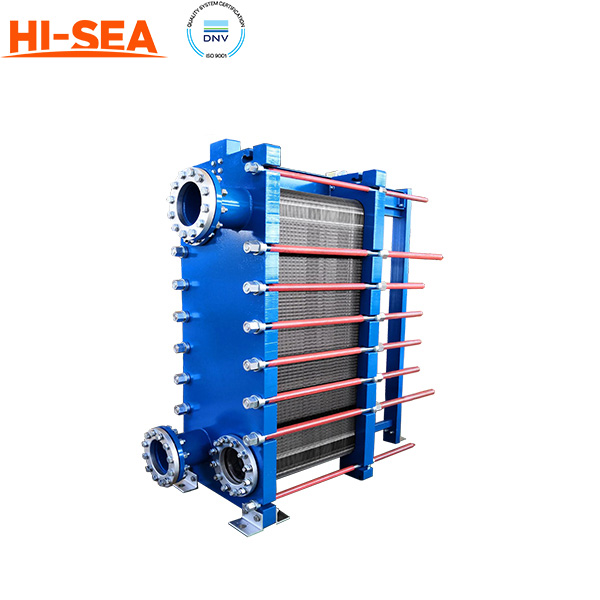
Plate Heat Exchanger
1. Introduction of plate heat exchanger
The plate heat exchanger is composed of a set of corrugated metal plates with four corner holes for the two liquids to pass through. The metal plates are installed in a frame with a fixed plate and a movable compression plate on the side, and are clamped by clamping bolts. The plate is equipped with a sealing gasket to seal the fluid channel and guide the fluid to alternately flow into the respective flow channel to form heat exchange.
It has the characteristics of high heat exchange efficiency, low heat loss, compact and lightweight structure, small footprint, wide application, long service life and so on. Under the same pressure loss, its heat transfer coefficient is 3-5 times higher than that of a tube heat exchanger, covering an area of one-third of that of a tube heat exchanger, and the heat recovery rate can be as high as 90% or more. There are two main types of plate heat exchangers: frame type (removable) and brazed type.
| Plate Heat Exchanger | |||
|
|
|
|
|
|
|
|
|
|
2. Plate Heat Exchanger Features
1. The plate heat exchanger is made of polymer synthetic fiber using a special process, which has the characteristics of high moisture permeability, good air tightness, tear resistance, and aging resistance.
2. The energy-saving effect of the plate heat exchanger products has reached the advanced level abroad, with long life and good temperature conductivity, suitable for areas with large indoor and outdoor temperature differences and small humidity differences.
3. The plate heat exchanger can be equipped with different functional sections such as heating, cooling, humidification, purification, and noise reduction according to user requirements.
4. Plate heat exchangers usually use stainless steel (ss 304, ss316), titanium alloys to be brazed at high temperature in vacuum to form a brazed type, or use seal ring bolts to lock into a combined type.
5. The plate heat exchanger forms a compact plate heat exchanger, which can withstand operation under continuous high temperature and high pressure conditions.
3. Basic Structure of Plate Heat Exchanger
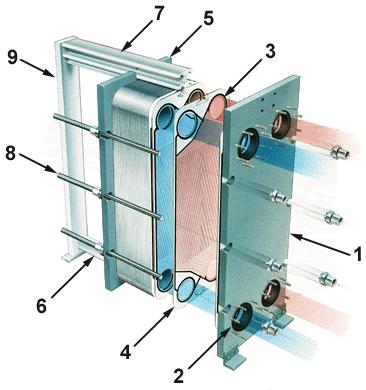
3. Points to note when choosing a plate heat exchanger
1. Fixed pressure plate
2. Port
3. Gasket
4. Plate
5. Movable pressure plate
6. Lower guide rod
7. upper guide rod
8. compression screw
9. Front support rod
The plate type or corrugated type should be determined according to the actual needs of the heat exchange occasion. If the flow rate is large and the pressure drop is small, the plate type with low resistance should be selected, otherwise, the plate type with large resistance should be used.
According to the fluid pressure and temperature, determine whether to choose a detachable or a brazed type. When determining the plate type, it is not advisable to choose a plate with a single plate area that is too small, lest there are too many plates, the flow velocity between the plates is too small, and the heat transfer coefficient is too low. This problem should be paid more attention to for larger heat exchangers.


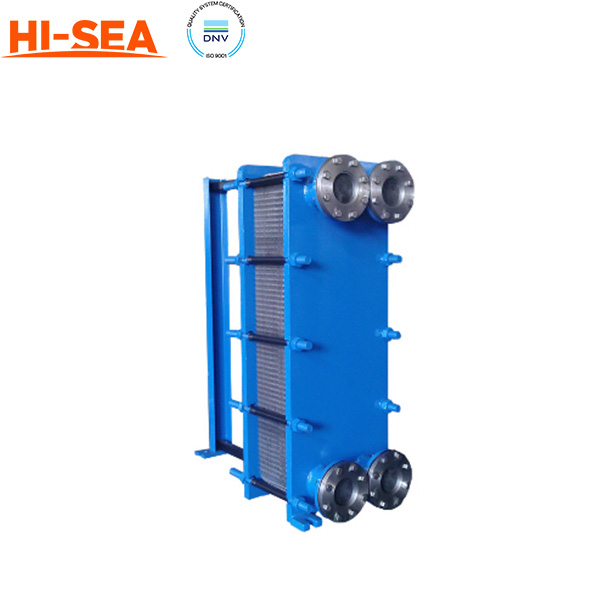 0.1 m³ Detachable Plate Heat Exchanger
0.1 m³ Detachable Plate Heat Exchanger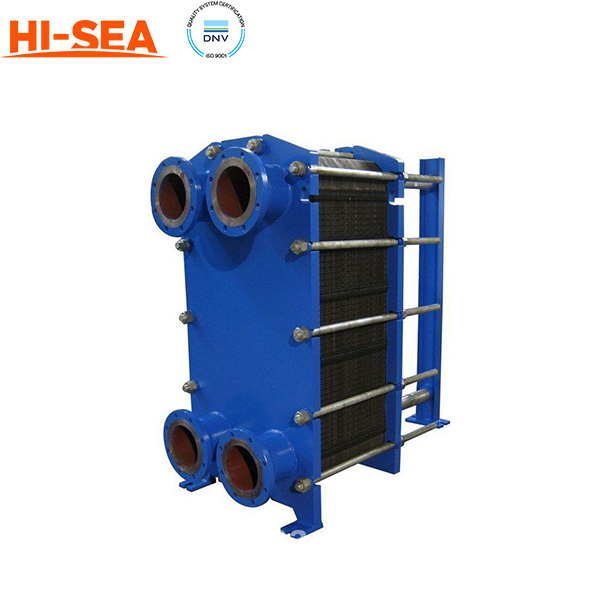 0.4 m³ Plate Heat Exchanger
0.4 m³ Plate Heat Exchanger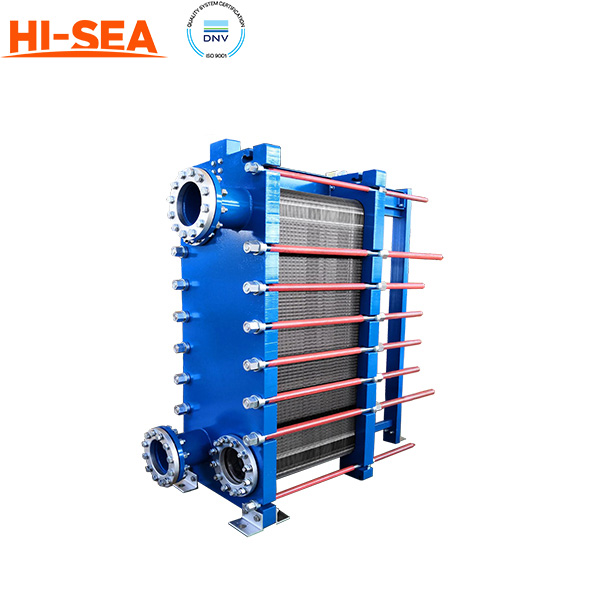 0.8 m³ Plate Type Water Heater
0.8 m³ Plate Type Water Heater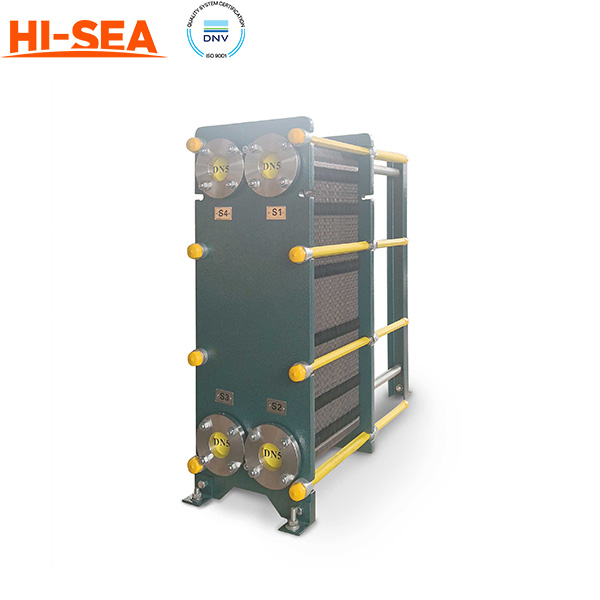 1 m³ Plate Heat Exchanger
1 m³ Plate Heat Exchanger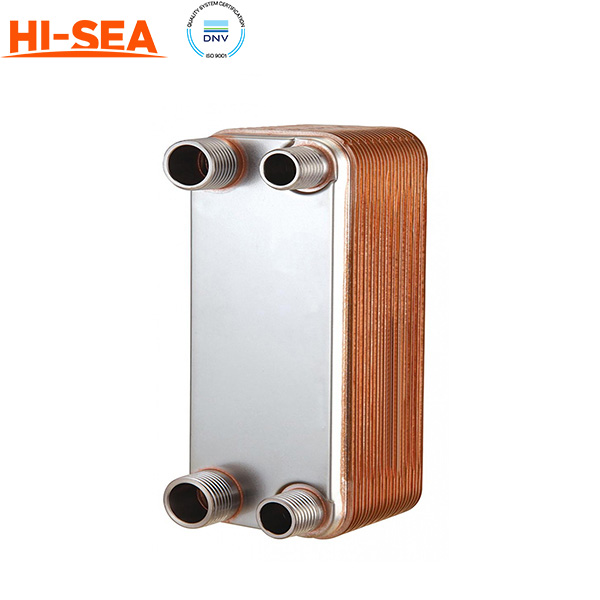 2.8 m³ Brazed Plate Heat Exchanger
2.8 m³ Brazed Plate Heat Exchanger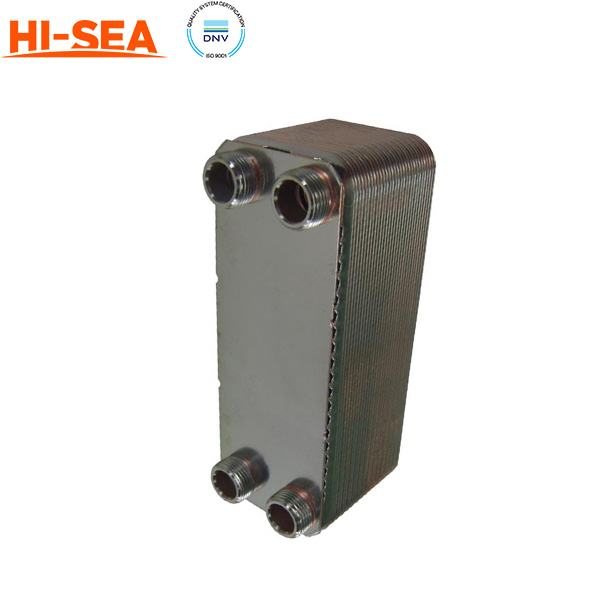 4 m³ Brazed Plate Heat Exchanger
4 m³ Brazed Plate Heat Exchanger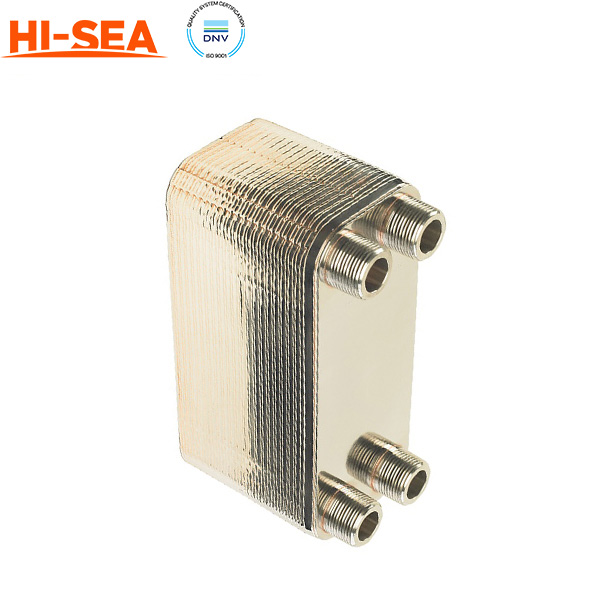 8.8 m³ Brazed Plate
8.8 m³ Brazed Plate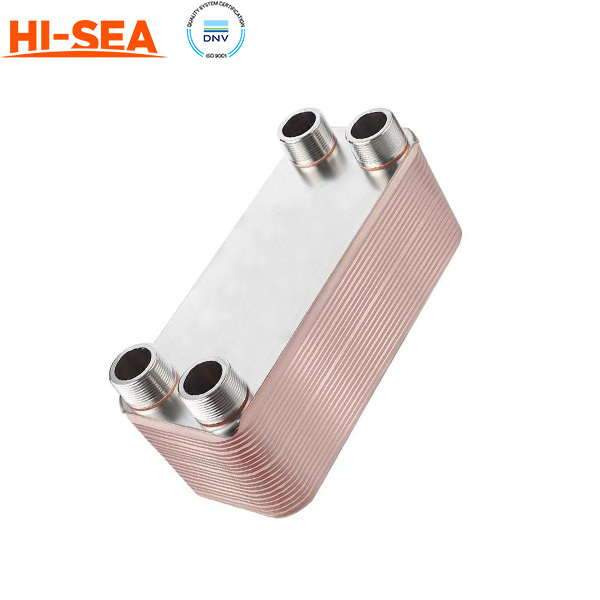 11 m³ Brazed Plate Heat Exchanger
11 m³ Brazed Plate Heat Exchanger